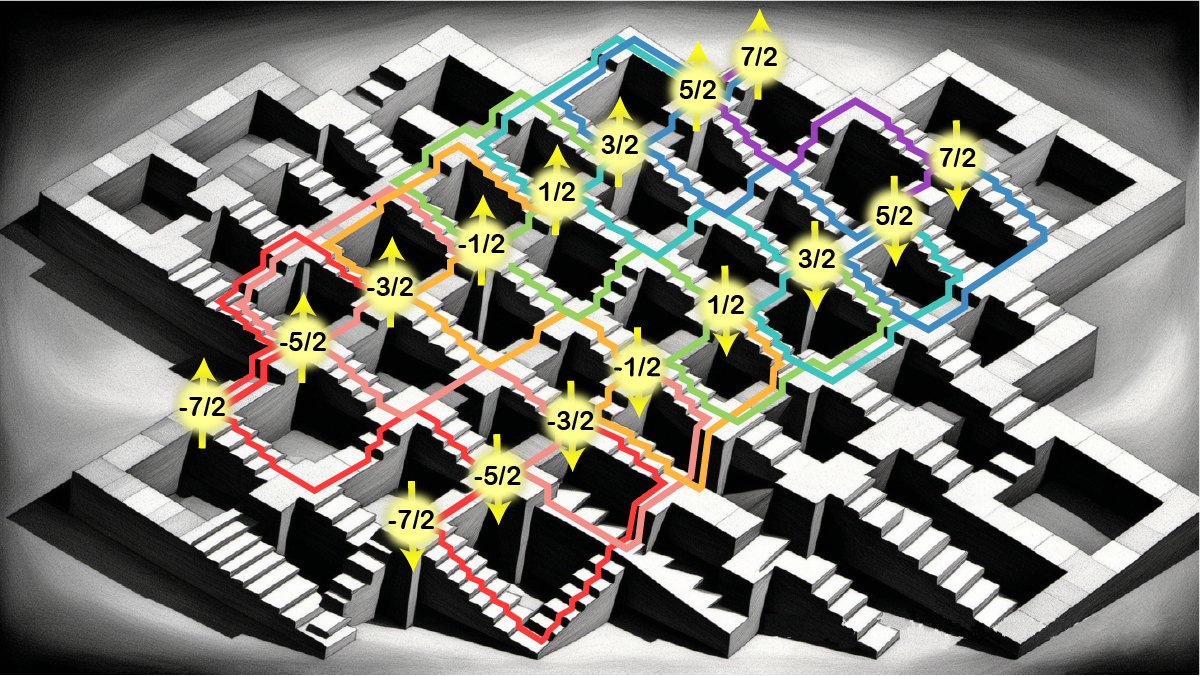Feb 20 2024
UNSW researchers have showcased various methods for encoding quantum information in silicon, enhancing the flexibility of quantum chip design.
 Artistic depiction of the 16 quantum states of the antimony atom and all the different ways one can climb between them. Image Credit: UNSW Sydney
Artistic depiction of the 16 quantum states of the antimony atom and all the different ways one can climb between them. Image Credit: UNSW Sydney
The special data in a quantum computer, known as quantum information, can be encoded in four different ways by UNSW Sydney quantum computing engineers inside a single silicon chip atom.
The achievement may lessen the difficulties associated with running tens of millions of quantum computing units within a silicon quantum computer chip that is only a few square millimeters in size.
The engineers explained how they encoded quantum information using the sixteen quantum “states” of an antimony atom in a paper published in Nature Communications. A heavy atom, called antimony, can be inserted into a silicon chip instead of one of the current silicon atoms.
It was selected because, within a single atom, its nucleus contains eight different quantum states, plus an electron with two quantum states, for a total of 8 × 2 = 16 quantum states. It would take four simple quantum bits, or qubits, the fundamental building block of quantum information, to achieve the same number of states.
Under the direction of Scientia Professor Andrea Morello, the team, according to lead author Irene Fernandez de Fuentes, drew on more than ten years of work that had established various methods of quantum control and demonstrated that all were possible within the same atom. Colleagues from the University of Melbourne used the Heavy Ion Accelerators at the Australian National University to implant the antimony atom in the chip.
First, we showed that we could control the antimony’s electron with an oscillating magnetic field, similar to the breakthrough in 2012, which was the first time a qubit had ever been demonstrated in silicon. Next, we showed that we could use a magnetic field to manipulate the spin of the antimony’s nucleus. This is the standard magnetic resonance method, as used, for example, in MRI machines in hospitals. The third method was to control the nucleus of the antimony atom with an electric field, something that was discovered by lucky accident in 2020.
Irene Fernandez de Fuentes, Study Lead Author, University of New South Wales
“And the fourth way was to control both the antimony nucleus and the electron in opposition to each other, using an electric field using so-called flip-flop qubits, which was demonstrated by this team last year. This latest experiment shows that all four of these methods can be used in the same silicon chip using the same architecture,” noted Irene Fernandez de Fuentes.
The benefit of having four distinct approaches is that they each allow physicists and computer engineers greater freedom in designing upcoming quantum computing chips.
For instance, magnetic resonance is quicker than electric resonance; however, because of the vast distribution of the magnetic field in space, it may also impact nearby atoms. Even though it is slower, electric resonance can be used locally to choose a single atom without affecting its neighbors.
Prof. Morello says, “With this big antimony atom, we have the complete flexibility of how we integrate it with a control structure over a silicon chip.”
Why This Matters
Millions, if not billions, of qubits will be working simultaneously in the quantum computers of the future to process data and simulate models in minutes, a task that would take hundreds or even thousands of years for today's supercomputers. Even though some groups worldwide have achieved success with large numbers of qubits—for example, Google's 70 qubit model or IBM's version with over 1000—their qubits need much larger spaces to function without interfering with one another.
However, Professor Morello and his associates at UNSW have adopted a different strategy, designing quantum computing with existing technologies for creating conventional computers. The benefit of employing silicon is that millions of qubits can be contained within a square millimeter of the chip, even though progress in the number of functional qubits may be slower.
We are investing in a technology that is harder, slower, but for very good reasons, one of them being the extreme density of information that it'll be able to handle. It's all very well to have 25 million atoms in a square millimeter, but you have to control them one by one. Having the flexibility to do it with magnetic fields, or electric fields, or any combination of them, will give us lots of options to play with when scaling up the system.
Andrea Morello, Scientia Professor, University of New South Wales
Back to the Lab
Next, the team will execute quantum operations far more complex than possible with simple qubits by utilizing the antimony atom's vast computational space. The idea is to encode a “logical” qubit (composed of more than two quantum levels) inside the atom to obtain sufficient redundancy to identify and fix errors as they happen.
Prof. Morello says, “This is the next frontier for practical, useful quantum computer hardware. Being able to build an error-corrected logical qubit within a single atom will be a tremendous opportunity for scaling up silicon quantum hardware to the point where it becomes commercially useful.”
Journal Reference:
de Fuentes, I. F., et al. (2024) Navigating the 16-dimensional Hilbert space of a high-spin donor qudit with electric and magnetic fields. Nature Communications. doi.org/10.1038/s41467-024-45368-y.